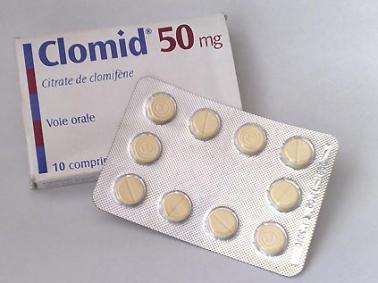Jon Jones Says Just Because He May Have Used PCT Drugs Doesn't Mean He Used Steroids
Jon Jones Says Just Because He May Have Used PCT Drugs Doesn't Mean He Used Steroids
UFC light heavyweight Jon Jones has denied knowingly using any banned performance-enhancing drug that violates the UFC Anti-Doping Policy. He concedes that he may have inadvertently ingested clomiphene (Clomid) and letrozole (Femara) via a contaminated dietary supplement. But just because he used Clomid and letrozole, it doesn't mean he also used anabolic steroids.
 The reason many people think Jones used anabolic steroids is because Clomid and letrozole are prescription drugs that are typically used by athletes to manage some of the undesirable side effects of anabolic steroids. Since the two drugs don't really offer athletes any significant enhancement in athletic performance, Clomid and letrozole are rarely ever used alone.
The reason many people think Jones used anabolic steroids is because Clomid and letrozole are prescription drugs that are typically used by athletes to manage some of the undesirable side effects of anabolic steroids. Since the two drugs don't really offer athletes any significant enhancement in athletic performance, Clomid and letrozole are rarely ever used alone.
On the other hand, it is a widespread harm reduction practice among steroid users to incorporate similar drugs to minimize the negative side effects associated with steroids. Both drugs are used to prevent gynecomastia (aka “gyno” or “bitch tits” or “man boobs”) and other estrogen-related side effects. Clomid is also used to restore the body's natural production of testosterone during post-cycle therapy (PCT).
Jones said that he only recently learned why steroid users also use clomiphene and letrozole. But he insisted that it “doesn't mean you actually took steroids”. In his case, Jones wanted everyone to believe he accidentally ingested it via a contaminated dietary supplement.
“You're absolutely right man, I learned that myself over the last week,” Jones wrote on Twitter. “But it doesnt mean you actually took steroids.”
Clomid and letrozole are broadly categorized as “anti-estrogens” but they each work in their own unique and different way.
Clomid is classified as a selective estrogen receptor modulator (SERM). Clomid does nothing to prevent the aromatization of steroids into estrogen. The circulating levels of estrogen remain elevated on moderate to high dosages of aromatizing steroids. SERMs only blocks the estrogen receptors thereby preventing estrogen from exerting its effects in certain tissues. SERMs are the gold standard treatment for gynecomastia.
Letrozole, on the other hand, stops the conversion of aromatizing steroids to estrogen. It belongs to a class of drugs called aromatase inhibitors (AIs). AIs keep circulating estrogen levels from ever becoming elevated in the first place. This can be useful to reduce the likelihood of developing gynecomastia but it is not the treatment of choice when treating an active case of gyno. But gyno is not the only undesirable side effect resulting from elevated estrogen levels. Letrozole will prevent those other undesirable side effects via estrogen management.
The most popular use of Clomid among steroid-using athletes is as a component in post-cycle therapy (PCT). PCT is the term used to describe the treatment for anabolic steroid induced hypogonadism (ASIH).
ASIH is a practically inevitable side effect resulting from the use of steroids. The use of exogenous steroids suppresses the body's natural production of testosterone. When an athlete completes a steroid cycle, their natural testosterone levels are much lower than when they start.
The body will usually recover from a steroid cycle on its own but this could take as long as 6 months or more. PCT is used to expedite the process and force the body to start producing testosterone as soon as possible.
If an athlete is caught using SERMs (like clomiphene) or AIs (like letrozole), it is generally as an ancillary drug accompanying steroids in the vast majority of cases.



 The reason many people think Jones used anabolic steroids is because Clomid and letrozole are prescription drugs that are typically used by athletes to manage some of the undesirable side effects of anabolic steroids. Since the two drugs don't really offer athletes any significant enhancement in athletic performance, Clomid and letrozole are rarely ever used alone.
The reason many people think Jones used anabolic steroids is because Clomid and letrozole are prescription drugs that are typically used by athletes to manage some of the undesirable side effects of anabolic steroids. Since the two drugs don't really offer athletes any significant enhancement in athletic performance, Clomid and letrozole are rarely ever used alone.